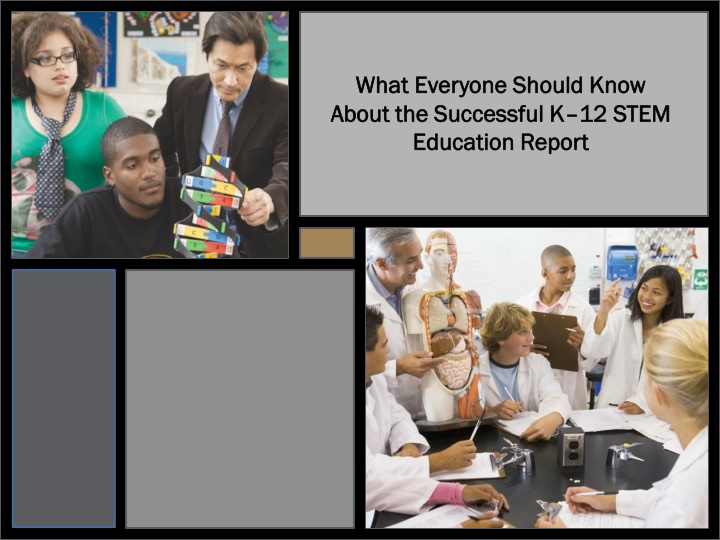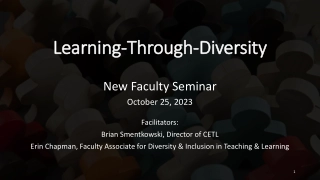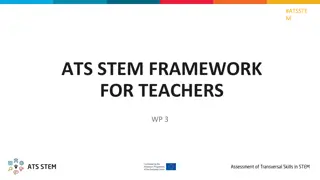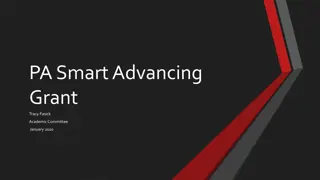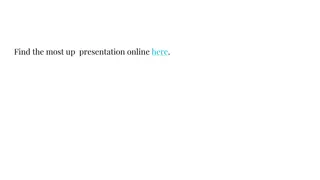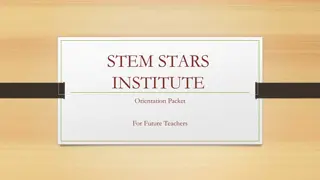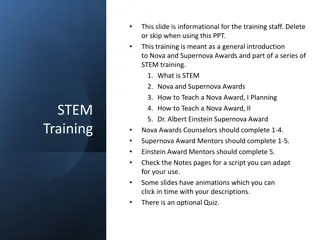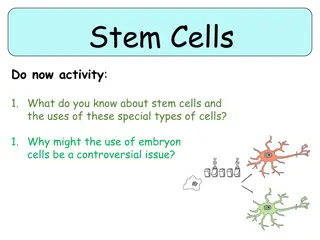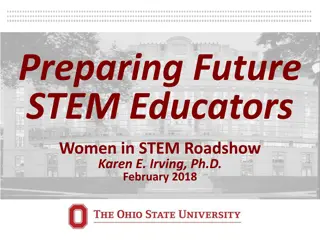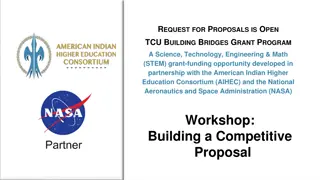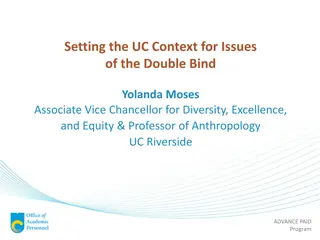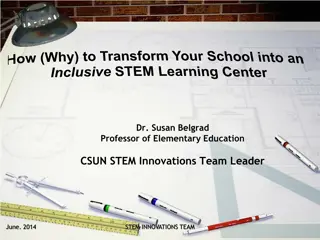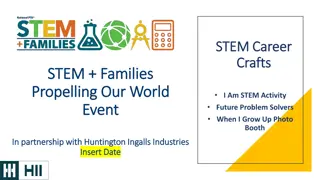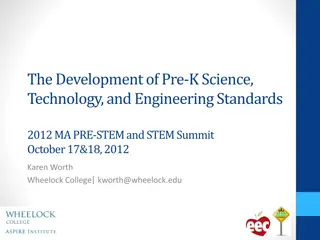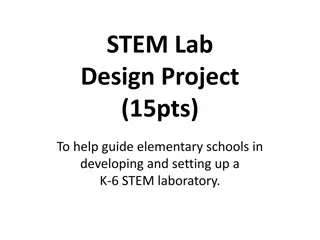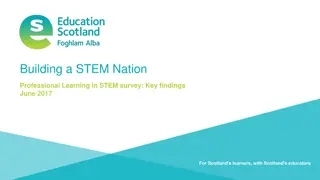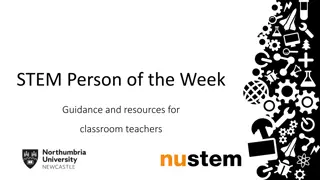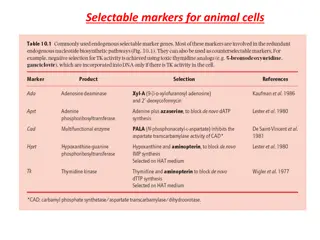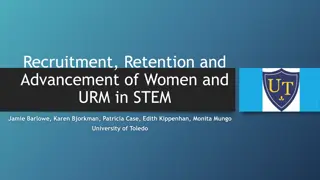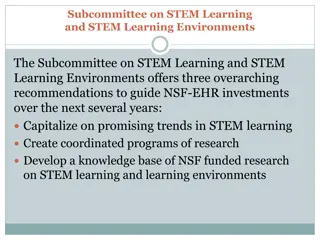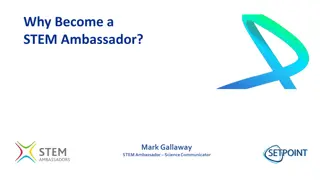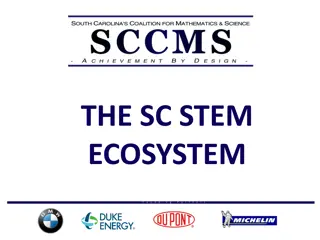Insights into Successful K-12 STEM Education Initiatives
Delve into a comprehensive report on successful K-12 STEM education, focusing on identifying effective approaches in Science, Technology, Engineering, and Mathematics. The report outlines criteria for determining success in STEM education, emphasizing goals to expand student participation in STEM careers, increase diversity, and enhance STEM literacy. Measures of success, areas of investigation, and specialized STEM-focused school models are explored in depth.
Download Presentation

Please find below an Image/Link to download the presentation.
The content on the website is provided AS IS for your information and personal use only. It may not be sold, licensed, or shared on other websites without obtaining consent from the author.If you encounter any issues during the download, it is possible that the publisher has removed the file from their server.
You are allowed to download the files provided on this website for personal or commercial use, subject to the condition that they are used lawfully. All files are the property of their respective owners.
The content on the website is provided AS IS for your information and personal use only. It may not be sold, licensed, or shared on other websites without obtaining consent from the author.
E N D
Presentation Transcript
What Everyone Should Know What Everyone Should Know About the Successful K About the Successful K 12 STEM Education Report Education Report 12 STEM
Successful K12 STEM Education Identifying Effective Approaches in Science, Technology, Engineering, and Mathematics NATIONAL RESEARCH COUNCIL OFTHENATIONALACADEMIES Committee on Highly Successful Schools or Programs for K-12 STEM Education Board on Science Education and Board on Testing and Assessment Division of Behavioral and Social Sciences and Education
OUR CHARGE Outline criteria for determining success in K Outline criteria for determining success in K- -12 STEM education education 12 STEM Identify which of those criteria could be addressed Identify which of those criteria could be addressed with available data with available data Successful for What Purpose?
GOALS FOR U.S. STEM EDUCATION 1. 1. Expand the number of students who pursue STEM Expand the number of students who pursue STEM careers, and increase women and minority participation. careers, and increase women and minority participation. 2. 2. Expand the STEM Expand the STEM- -capable workforce and increase women capable workforce and increase women and minority participation. and minority participation. 3. 3. Increase STEM literacy for all students. Increase STEM literacy for all students.
MEASURES OF SUCCESS Achievement test scores Achievement test scores Enjoyment of processes of exploration and Enjoyment of processes of exploration and discovery in STEM discovery in STEM STEM educational attainment STEM educational attainment Involvement in STEM Involvement in STEM- -related activities related activities Entry into STEM and STEM Entry into STEM and STEM- -related occupations related occupations
AREAS INVESTIGATED STEM STEM- -focused schools focused schools STEM instruction STEM instruction School conditions School conditions
STEM-FOCUSED SCHOOLS Three types of specialized schools Three types of specialized schools 1. Selective STEM schools Mainly high schools that enroll small numbers of highly talented and motivated students 2. Inclusive STEM schools Organized around STEM disciplines but without selective admissions criteria 3. STEM-focused CTE schools Mainly high schools, aim to foster engagement and to prepare students for STEM-related careers
STEM-FOCUSED SCHOOLS Limited research base to compare effectiveness Limited research base to compare effectiveness Potentially promising findings for each type of school Potentially promising findings for each type of school Success in selective schools occurs through student research experiences Inclusive schools promote engagement and modestly lift test scores Mathematics instruction and occupational education can be successfully integrated in CTE schools Specialized programs in regular schools such as AP Specialized programs in regular schools such as AP and IB may also promote advanced study and career and IB may also promote advanced study and career preparation preparation
EFFECTIVE STEM INSTRUCTION Research base is much stronger Research base is much stronger Effective instruction capitalizes on students early Effective instruction capitalizes on students early interest, builds on what they know, provides experiences interest, builds on what they know, provides experiences to engage in the practice of science to engage in the practice of science Vision consistent with the Conceptual Framework for New Science Education Standards Evidence presented at workshop and drawn from past NRC reports Effective instruction can occur in all school types Effective instruction can occur in all school types
KEY ELEMENTS OF EFFECTIVE INSTRUCTION 1. 1. A coherent set of standards and curriculum A coherent set of standards and curriculum 2. 2. Teachers with high capacity to teach in their disciplines Teachers with high capacity to teach in their disciplines 3. 3. A supportive system of assessment and accountability A supportive system of assessment and accountability 4. 4. Adequate instructional time Adequate instructional time 5. 5. Equal access to high Equal access to high- -quality learning opportunities quality learning opportunities
SCHOOL CONDITIONS THAT SUPPORT LEARNING 1. 1. School leadership as the driver for change School leadership as the driver for change 2. 2. Professional capacity of faculty and staff Professional capacity of faculty and staff 3. 3. Parent Parent- -community ties community ties 4. 4. Student Student- -centered learning climate centered learning climate 5. 5. Instructional guidance for teachers Instructional guidance for teachers
RECOMMENDATIONS FOR DISTRICTS Consider all models of STEM Consider all models of STEM- -focused and comprehensive schools comprehensive schools focused and Devote adequate instructional time and resources to K Devote adequate instructional time and resources to K- - 5 science 5 science Ensure that STEM curricula are focused on core topics, Ensure that STEM curricula are focused on core topics, are rigorous, and articulated as a sequence are rigorous, and articulated as a sequence Enhance K Enhance K- -12 teacher capacity 12 teacher capacity Provide instructional leaders with professional Provide instructional leaders with professional development to create supportive conditions development to create supportive conditions
RECOMMENDATIONS FOR POLICY MAKERS Elevate science to the same level of importance as Elevate science to the same level of importance as reading and mathematics reading and mathematics Develop science assessments aligned with standards Develop science assessments aligned with standards and emphasize science practices and emphasize science practices Invest in a coherent, focused, and sustained set of Invest in a coherent, focused, and sustained set of supports for STEM teachers supports for STEM teachers Support research that addresses key gaps in current Support research that addresses key gaps in current knowledge knowledge
